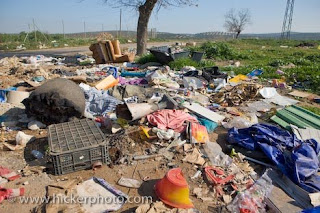
The contamination of land usually results from its commercial or industrial usage or from the spillage or dumping of waste, including landfill. These activities may have left elevated levels of heavy metals, hydrocarbons and other compounds on the land, and possibly in the groundwater. These may have the potential to cause harm to people or to the environment. The environmental quality team is responsible for inspecting sites in the borough for sources of contamination.
Land pollution the action of environmental contamination with man-made waste on land. Americans generate five pounds of solid waste every day, furthermore creating one ton of solid waste each year. (Kaufman and Franz) In an average day in the United States, people throw out 200,000 tons of edible food and throw 1 million bushels of litter out of their automobiles. (Kaufman and Franz) The main human contributor to pollution are landfills. Approximately half of our trash is disposed in landfills. (Dubay et al) Only 2% of our waste is actually recycled.
It is possible that land pollution might also contaminate the air and/or the water or vice versa. In the picture above, for example, some of the trash may end up getting washed into the lake adjacent to it. In another situation, chemical waste may not be disposed of properly and toxic substances may seep into the ground. These seeping chemicals can potentially contaminate a local body of water. It is also possible that these chemicals may give off a toxic vapor, thereby contributing to air pollution as well.












0 comments:
Post a Comment